Photographs: Stringer/Reuters Ramamohan Rao New Delhi
General Pervez Musharraf has not surprised anyone in India by 'disclosing' that Pakistan used US military aid meant for the 'war against terror' in Afghanistan to strengthen defences against India.
The only element of surprise is, that for the first time, a person of the stature of a former President and Chief of Army Staff of Pakistan, has publicly admitted it.
General Musharraf is in excellent company. Before him, General Ayub Khan used US aid given to Pakistan as part of the Central Treaty Organisation to build the Pakistan armed forces and launched a war against India in 1965.
Ramamohan Rao is former Principal Information Officer, Government of India.
...
In 1965, Pak equipped itself with modern tanks, aircraft
Image: General Ayub KhanPhotographs: UN Photo
Later, General Zia-ul-Haq, became an 'ally' of the United States in the war against the Soviets in Afghanistan, and generously helped the Pakistan Army and the Inter-Services Intelligence to promote a proxy war against India in Punjab and later in Jammu and Kashmir.
As far as General Ayub Khan was concerned, Pakistan was emboldened to launch an attack on India in 1965 as it had equipped itself with modern Patton tanks and Starfighter aircraft. Pakistan undertook a trial run against India in the Rann of Kutch during the summer of 1965 and felt emboldened that it could 'capture' Kashmir.
It was 'now or never' for Pakistan. Jawaharlal Nehru had passed away in 1964, after India suffered an ignominious defeat against China in 1962. In spite of the reverses, Nehru did not make India a part of the Western military alliance.
The United States gave India some small arms to equip the newly raised mountain divisions against the Chinese. But that was all. India was in the process of rebuilding its armed forces.
'India was seen as a weak country'
Image: Indian Prime Minister Lal Bahadur ShastriIndia was seen as a weak country, the Prime Minister was Lal Bahadur Shastri, a self-effacing, physically diminutive person.
Pakistan sent infiltrators to Kashmir after the adventure in Kutch with the hope that people would 'rise' against India. Instead, the villagers along the 'cease-fire' line as the Line of Control was then called, reported the presence of Pakistani infiltrators to the Indian Army.
In the actions that followed, Pakistani infiltrators were rounded up and prominent features like Haji Pir were captured.
Pakistan then thought that the Indian Army in Jammu and Kashmir should be attacked in the Jammu region, which would choke the forces in the Kashmir region.
'Pakistan was in for a surprise'
Image: IAF's Mystere fighters being armed with 30 mm cannon roundsPhotographs: Indian Air Force
The 'weak' Prime Minister Lal Bahadur Shastri then displayed strength and his able Defence Minister Yeshwantrao Chavan decided to attack Pakistan on the Punjab border across Wagah on September 6.
Indian troops were knocking at the doors of Lahore soon after. Pakistan was in for a surprise. It mounted a counter-attack all along the Punjab border -- in Lahore, Burki and Khem Karan. The Rajasthan border too became live.
In the 22-day war, Pakistan lost territory both in Jammu and Kashmir and in Punjab, though it was able to capture a few pockets in the Khem Kharan area.
'Pak Army abandoned the Pattons'
Image: Indian Army personnel pose atop destroyed and abandoned Pakistani M-47 and M-48 tanks near KhemkaranPhotographs: Abhinay Rathore/Wikipedia
I was the Public Relations Officer for the Indian formation in the Lahore sector. It was my privilege to see the high morale of the people of Punjab and also the debacle that the Pakistan armoured formations suffered.
The World War II vintage Sherman and Centurion tanks of the Indian Army regiments led by gallant officers like Lt Col A S Vaidya (later General) and Lt Col S Caleb, made mincemeat of the Pakistani attack.
The Pakistan Army abandoned the Pattons and a 'graveyard ' of Patton tanks was established at Bhikhiwind. The Pakistani Air Force had an effective adversary in the tiny Gnat aircraft.
As Public Relations Officer of the Indian Army, it was my duty to conduct Indian and foreign correspondents to the battlefront. The American correspondents were very keen to find out what had happened to their Patton tanks.
'Pakistan never learnt its lessons'
Image: Former US President Nixon with then Indian Prime Minister Indira Gandhi at the Oval office in 1971They were surprised to see undamaged Pattons on the front, and at the graveyard at Bhikhiwind.
Many of the American war correspondents had filed stories from the Pakistani front during the first week of the operations proclaiming that the Pakistan Army was winning the war.
On the day of cease-fire the Indian Army was firmly in control of the Icchogil Canal on the outskirts of Lahore.
Pakistan never learnt its lessons. The United States continued its aid to Pakistan. Pakistan cracked down in East Pakistan in 1971, when the Eastern Wing demanded that the results of general elections, which would have made East Pakistan leader Sheikh Mujibur Rehman, lead the country.
The United States, headed by President Nixon, supported the military rulers in Pakistan.
In the war that followed, Nixon sent the Seventh Fleet, but it was too late. Pakistan lost its Eastern Wing.
'Pak learnt the art of promoting proxy war from the US'
Image: Former US President Nixon with Pakistan's General Yahya KhanPhotographs: US Office of the Historian
General Zia-ul-Haq succeeded General Yahya Khan after a period of turmoil. Pakistan again became a frontline state when the Soviet forces occupied Afghanistan in 1980.
Pakistan salted away a part of the weapons received by it to fight the Soviets. It also learnt the art of promoting a proxy war from the US.
Zia used the 'lessons' learnt to promote a proxy war in Punjab and Jammu and Kashmir.
When the United States succeeded in forcing the Soviet Forces out of Afghanistan, it withdrew from the region. Pakistan used what was left over, to strengthen itself and conduct a proxy-war against India.
But the flow of 'aid' had become a trickle.
'India has never been under any illusion about Pak or its rulers'
Image: A file photo of the aftermath of the 9/11 bombingsPhotographs: Reuters
Afghanistan became a target for the United States again, following 9/11 attacks on the World Trade Centre. The United States was looking for 'ally' in the war against terror.
General Musharraf, who was going through a tough time after having lost the Kargil war in 1999, earning the ire of President Bill Clinton, and worldwide opprobrium for 'dismissing' Nawaz Sharif, rehabilitated himself by becoming a frontline state in the 'war against terror'.
Musharraf tried his best to keep both the 'Islamists' and the Americans on his side. He promised the 'jehadis' that he would come back triumphant from Agra after 'convincing' Prime Minister Atal Bihari Vajpayee to buy peace with Pakistan.
Musharraf's Islamist friends have now become the Taliban, and the fight against them has been handed over to President Obama.
India has never been under any illusion about Pakistan or its military rulers, the last being General Musharraf.
What is sad is that the Pakistan, which has promoted proxy war in India, is fighting a war against its own people. General Musharraf had the 'privilege' to write the latest, or perhaps the 'last chapter' of Jinnah's creation.

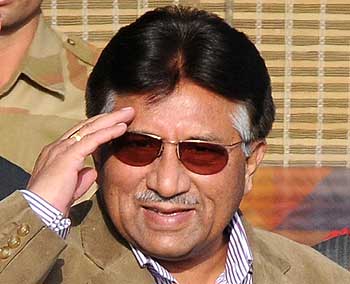
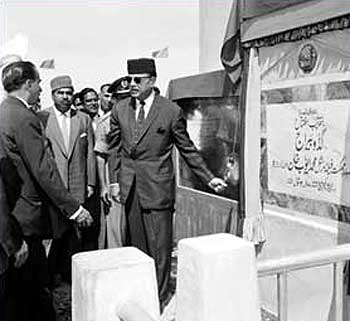

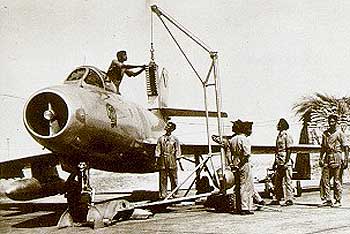
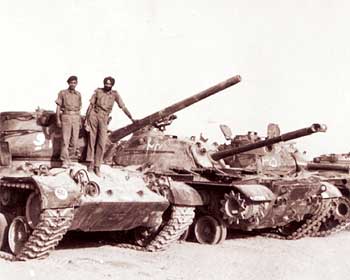
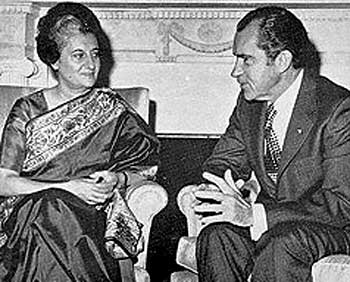
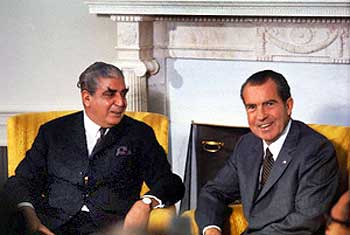
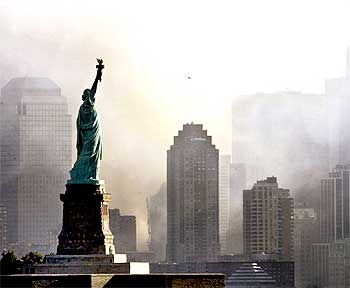
article